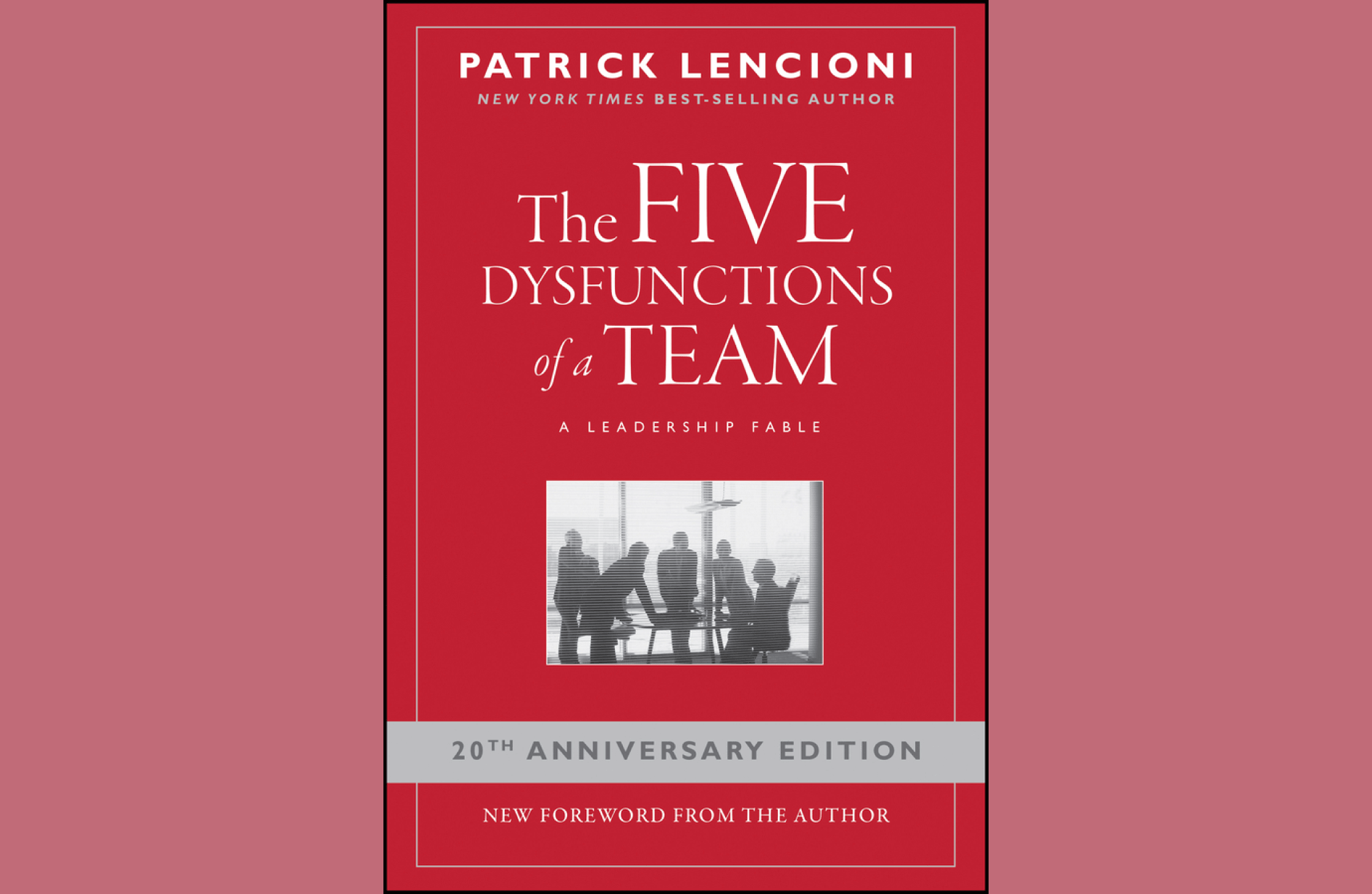Trust: the Invisible Force Behind High-performance Teams and how to do It
Explore the transformative power of vulnerability and trust in leadership through insights from Patrick Lencioni's The Five Dysfunctions of a Team. Discover practical strategies and quotes that empower teams to thrive, innovate, and achieve extraordinary success.

In the ever-evolving landscape of modern leadership, the ability to cultivate genuine connections within teams has become the linchpin of success. One invaluable lesson stands out in this pursuit: the transformative power of vulnerability and trust. Drawing inspiration from Patrick M. Lencioni's seminal work, The Five Dysfunctions of a Team: A Leadership Fable, this discourse explores the practical aspects of implementing vulnerability and trust in leadership, focusing on real-world applications and actionable strategies.
“Not finance. Not strategy. Not technology. It is teamwork that remains the ultimate competitive advantage, both because it is so powerful and so rare.”
Transitioning from Theory to Practice
Transitioning from the theoretical realm to practical application demands a strategic approach. Leaders must first recognize the importance of vulnerability and trust in fostering a cohesive team. Understanding that these qualities are not signs of weakness but pillars of strength sets the stage for transformative leadership.

Active Communication: Fostering Openness
Effective communication is the lifeblood of any functional team. Active communication involves not just talking but also listening. Leaders must actively engage in transparent dialogues, encouraging team members to voice their thoughts and concerns. Actively listening, without judgment, creates an atmosphere where everyone feels heard and valued.
Lead by Example: Demonstrating Vulnerability
Leaders must lead by example. Sharing personal stories of failures and setbacks can be immensely powerful. These narratives not only humanize the leader but also showcase resilience. Acknowledging mistakes openly and discussing the lessons learned sends a powerful message—it’s alright to falter, as long as you learn and grow from it.
Remember teamwork begins by building trust. And the only way to do that is to overcome our need for invulnerability.
Creating Safe Spaces: Encouraging Team Members
Building trust begins with creating safe spaces within the team. Encourage team members to express their opinions, even if they differ from the majority. Emphasize that diverse perspectives are not just welcome but crucial for innovation. Acknowledge and appreciate contributions, reinforcing the idea that every team member is a valued part of the collective effort.
Active Participation: Collaboration in Action
Encouraging active participation is pivotal. Team-building activities, brainstorming sessions, and collaborative projects provide practical avenues for team members to engage with one another. These activities foster camaraderie, allowing individuals to understand each other’s strengths and weaknesses organically.
Feedback Loops: Constructive Criticism and Growth
Constructive criticism is a powerful tool for growth when delivered in the right spirit. Leaders should establish feedback loops within the team. Regular, focused feedback sessions provide team members with insights into their performance. When feedback is specific, actionable, and given with the intention of growth, it builds trust. Team members feel supported and empowered to improve.
Conflict Resolution: Navigating Challenges Together
Conflicts are inevitable in any team setting. However, the way conflicts are handled can either strengthen or weaken trust. Leaders must facilitate respectful conflict resolution sessions. Acknowledge differing viewpoints and guide the team toward finding common ground. Constructive conflict resolution resolves immediate issues and demonstrates the team’s ability to overcome challenges together, solidifying trust in the process.
Accountability: Responsibility and Ownership
Accountability is the cornerstone of reliability. Leaders must establish clear roles and responsibilities within the team. When expectations are transparent, team members understand their individual contributions to the collective goal. Celebrate achievements and milestones, reinforcing that accountability is not just about addressing failures but also acknowledging successes.
Measuring Progress: Quantifiable Outcomes
Practicality demands measurable outcomes. Establish key performance indicators (KPIs) that reflect the team’s progress. Regularly assess these metrics and celebrate achievements collectively. Clear progress markers provide tangible evidence of the team’s efforts and foster a sense of accomplishment, reinforcing trust in the team’s abilities.
Continuous Learning: Adapting and Evolving
Leadership is a journey of continuous learning. Encourage team members to engage in learning opportunities, both individually and collectively. Whether attending workshops, online courses, or industry conferences, continuous learning enhances individual skills. It enriches the team’s collective knowledge. Embracing new ideas and perspectives strengthens the team’s adaptability, a crucial component of trust in leadership.
Leadership Integrity: Upholding Ethical Standards
Integrity forms the bedrock of trust. Leaders must uphold ethical standards consistently. Demonstrating integrity in decision-making and actions fosters trust among team members. Even in challenging situations, upholding ethical principles showcases the leader’s commitment to fairness and honesty, reinforcing trust in their leadership.

Conclusion: A Blueprint for Transformative Leadership
In the practical realm of leadership, the integration of vulnerability and trust forms a blueprint for transformative change. By actively fostering open communication, leading by example, creating safe spaces, encouraging active participation, facilitating constructive feedback, resolving conflicts respectfully, establishing accountability, measuring progress, promoting continuous learning, and upholding ethical standards, leaders can build teams that are not just functional but extraordinary.
As leaders, it is our responsibility to recognize the potential within each team member and provide the platform for that potential to flourish. Embracing vulnerability and trust is not just a choice; it’s necessary in today’s collaborative world. By implementing these practical strategies, leaders can nurture productive, efficient, empathetic, innovative, and resilient teams.
This approach transcends theory, becoming a lived experience that transforms teams and entire organizational cultures, fostering an environment where trust and authenticity are encouraged and celebrated. In this celebration, the true essence of transformative leadership reveals itself—a journey where leaders and teams evolve, adapt, and achieve unparalleled success together.



